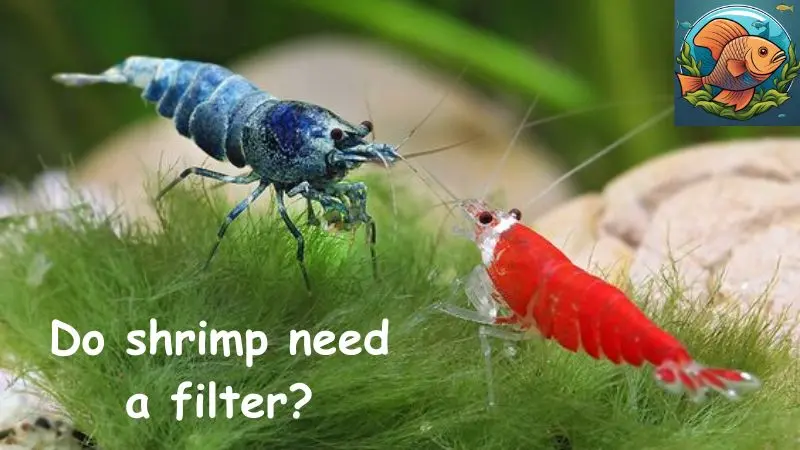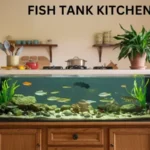marine life blog
Do shrimp need a filter?
The captivating world of shrimp keeping has seen a surge in popularity, with enthusiasts drawn to the vibrant colors, intricate behaviors, and relatively low-maintenance nature of these fascinating crustaceans. However, a common question arises among aspiring shrimp keepers: do shrimp need a filter? The answer, while seemingly straightforward, requires a nuanced understanding of the delicate balance within a shrimp tank ecosystem.
Let’s explore this issue further with fishtankmagic.com in the article below!
The Importance of Water Quality for Shrimp
Shrimp, particularly the delicate and popular neocaridina and caridina species, are highly sensitive to water parameters. Their tiny bodies and delicate gills are susceptible to fluctuations in ammonia, nitrite, nitrate, pH, and even dissolved oxygen levels. Maintaining pristine water quality is paramount to their health and longevity.
Ammonia is a toxic byproduct of fish and shrimp waste, as well as uneaten food. High ammonia levels can cause gill irritation, lethargy, and even death. Nitrite is another dangerous compound that forms during the breakdown of ammonia. It can interfere with oxygen uptake and lead to stress and illness. Nitrate, while less toxic than ammonia and nitrite, can still accumulate and cause problems if not managed. pH levels, representing the acidity or alkalinity of the water, also play a crucial role. Shrimp thrive in slightly acidic to neutral pH ranges, and fluctuations can lead to stress and disease. Lastly, dissolved oxygen is essential for shrimp respiration. Low oxygen levels can cause suffocation and death, especially in densely populated tanks.
The Role of Filtration in Maintaining Water Quality
Filtration systems are the cornerstone of a healthy shrimp tank. They play a vital role in removing harmful waste products, controlling ammonia and nitrite levels, and maintaining proper water parameters.
Mechanical filtration is the first line of defense against debris and particulate matter. Mechanical filters, typically containing sponges or filter floss, physically trap larger particles, preventing them from clouding the water and polluting the environment.
Biological filtration is the heart of a shrimp tank’s ecosystem. Beneficial bacteria, known as nitrifying bacteria, colonize filter media like bio-balls, ceramic rings, or even sponge material. These bacteria convert toxic ammonia into less harmful nitrite, and then further convert nitrite into even less harmful nitrate. This process, known as the nitrogen cycle, is essential for maintaining a stable and healthy environment for shrimp.
Chemical filtration is often employed to address specific water quality issues. Activated carbon filters can remove dissolved organic compounds, such as tannins, which can discolor the water and affect shrimp health. Other chemical filters may target specific pollutants, such as chlorine or heavy metals.
Do Shrimp Need a Filter? The Definitive Answer
The short answer is a resounding yes. Shrimp, especially those kept in smaller tanks, absolutely need a filter to maintain water quality. While shrimp can tolerate some level of waste accumulation, their small size and sensitivity make them particularly vulnerable to poor water conditions.
Factors Influencing Filtration Needs
While the need for filtration is undeniable, the specific type and size of filter required can vary depending on several factors:
- Tank size: Larger tanks generally require more powerful filtration systems to handle the increased waste load.
- Shrimp density: A higher density of shrimp will produce more waste, necessitating a more robust filtration system.
- Substrate type: Some substrates, like sand or gravel, can harbor beneficial bacteria, contributing to biological filtration.
- Water changes: Regular water changes can help reduce the workload on the filter and maintain optimal water quality.
- Feeding habits: Overfeeding can lead to excessive waste production, requiring a more powerful filter.
- Shrimp species: Some shrimp species, like the delicate “bee shrimp,” are more sensitive to water quality and may require a more robust filtration system.
Choosing the Right Filter for Your Shrimp Tank
When selecting a filter for your shrimp tank, consider the following factors:
- Flow rate: Choose a filter with a flow rate appropriate for the tank size. Too strong a flow can stress shrimp, while too weak a flow may not be sufficient to maintain water quality.
- Filter media: Ensure the filter has appropriate media for mechanical, biological, and chemical filtration.
- Ease of maintenance: Choose a filter that is easy to clean and maintain. Regular cleaning and media replacement are essential for optimal performance.
- Noise level: Some filters can be noisy, which may be disruptive to shrimp and their environment.
- Price: Filter systems can range in price, so choose one that fits your budget.
Alternatives to Traditional Filters
While traditional filters are the most common and effective method for maintaining water quality in shrimp tanks, some alternative methods can be employed:
- Sponge filters: These simple and inexpensive filters are often used in shrimp tanks. They provide mechanical and biological filtration, and their gentle flow is less stressful for shrimp.
- Hang-on filters: These compact filters are easy to install and maintain. They offer good filtration capacity for smaller tanks.
- Undergravel filters: These filters are less common today but can still be effective. They use the substrate as a filter medium, providing both mechanical and biological filtration.
- Natural filtration: Some shrimp keepers utilize natural filtration methods, such as live plants or a “refugium” tank. These methods can contribute to water quality but may not be sufficient alone.
Do Shrimp Need a Filter? The Importance of a Balanced Ecosystem
While a filter is essential for maintaining water quality in a shrimp tank, it’s crucial to remember that a filter alone is not a solution. A balanced ecosystem is key to long-term shrimp health. This includes:
- Regular water changes: Water changes are essential for removing accumulated waste and replenishing essential minerals.
- Proper feeding: Overfeeding should be avoided, as it leads to excessive waste production.
- Substrate selection: A substrate that promotes beneficial bacteria growth can contribute to biological filtration.
- Live plants: Live plants help absorb nutrients, provide oxygen, and create a more natural environment.
- Regular maintenance: Regular cleaning and maintenance of the filter and tank are essential for optimal performance.
Conclusion: The Importance of Informed Choices
The question of whether shrimp need a filter has a clear and definitive answer: yes. Filtration is essential for maintaining water quality and ensuring the health and longevity of these delicate creatures. However, it’s important to choose the right filter for your specific needs, considering factors such as tank size, shrimp density, and feeding habits. Furthermore, a filter alone is not enough. A balanced ecosystem, including regular water changes, proper feeding, and live plants, is crucial for creating a thriving environment for your shrimp. By understanding the importance of filtration and adopting best practices for tank maintenance, you can provide your shrimp with the optimal conditions for a long and healthy life.












